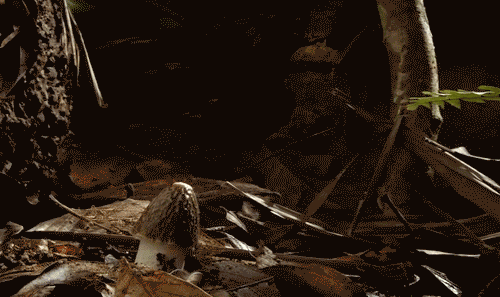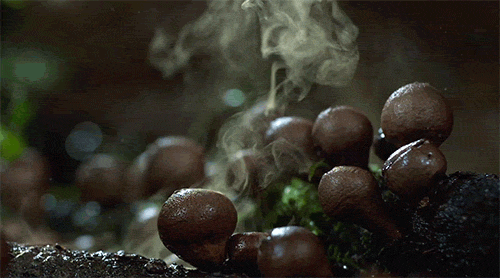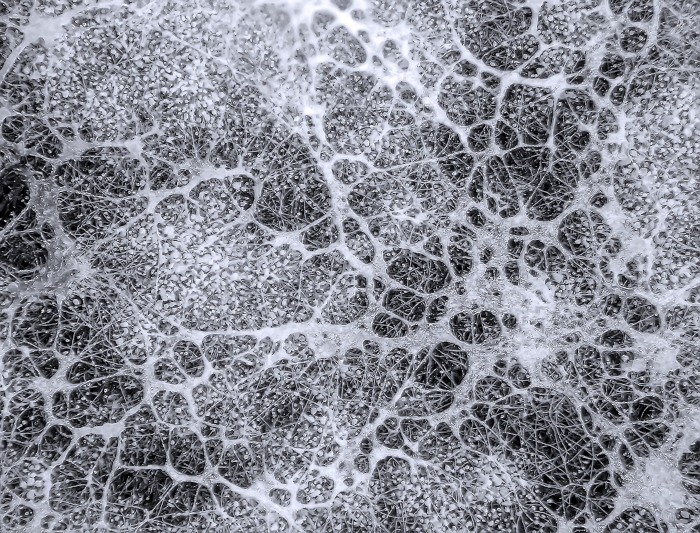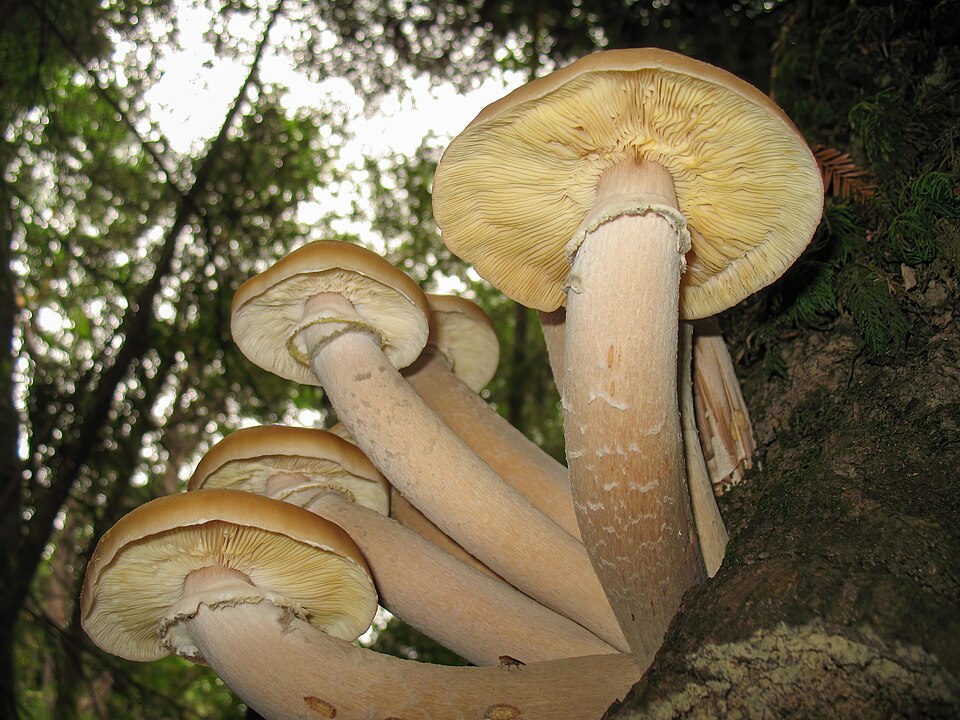The life cycle of fungi
Fungi are fascinating organisms that play an essential role in ecosystems. From their ability to break down organic matter to forming symbiotic relationships with plant roots, their presence brings value on multiple levels. However, to truly understand their importance, it is vital to know their life cycle.
In this article, we explore the key stages of the fungal life cycle, from spore release to fruiting.

What is the fungal life cycle?
The fungal life cycle is a complex biological process that combines cellular transformation, symbiosis with other organisms, and reproduction, both sexual and asexual. This sequence begins with the release of a microscopic spore and ends with the appearance of a fruiting body — the visible mushroom — which in turn generates new spores, closing the cycle and ensuring the species’ continuity.
Far from being a simple succession of stages, this cycle is deeply synchronized with environmental factors such as temperature, humidity, and the presence of other organisms. In this ecological dance, fungi interact actively with their surroundings, recycling nutrients, forming alliances with plants through mycorrhizae, and even protecting soil against erosion.
Beyond their ecological importance, understanding this cycle has fundamental practical applications. In the field of cultivation, it allows for the optimization of edible, medicinal, or functional mushroom production. In applied mycology, it is key to researching new species or developing innovative solutions such as biopesticides, biomaterials, or antibiotics.
From an invisible spore to a complex organism with underground networks and reproductive structures, the fungal life cycle represents a model of adaptation and resilience in nature. Studying it opens the door to an underground world that is as invisible as it is indispensable.
Phases of the fungal life cycle
1. Spore formation and release
Everything starts with a spore. In the fungal universe, these tiny structures are responsible for initiating a new cycle. Although they are often compared to seeds, spores lack nutrient reserves like those of plants. Instead, they are designed to withstand extreme conditions and disperse widely.
What are spores?
Spores are microscopic, highly resistant structures that contain the genetic material necessary to form a new fungal organism. They are produced in enormous quantities, increasing the chances that some will find a suitable environment to develop. Their morphology is surprisingly diverse: they can be spherical, elliptical, smooth, or spiny, and their color varies depending on the species.
How are spores released?
During the reproductive phase, fungi generate spores in specialized structures, which vary depending on their classification. In basidiomycetes — like button mushrooms — spores are formed in basidia, small cells located under the cap. In ascomycetes, such as morels, they develop inside sacs called asci.
Once mature, the spores are released into the environment and can be transported by wind, water, insects, or mammals. Some species display spectacular dispersal mechanisms. For example, puffballs (Lycoperdon) release a visible cloud of spores when compressed, showcasing the dynamic beauty of the fungal kingdom.

2. Spore germination
When a spore lands in a suitable environment — with abundant organic matter, proper humidity, and optimal temperatures — it begins the germination phase. This step marks the start of the fungus’s active life and is especially delicate: without the right conditions, the spore may remain dormant or die.
Initial hyphal formation
During germination, the spore produces a primary hypha, a filamentous structure that explores the surroundings in search of nutrients. These hyphae grow through elongation and branching, forming an interconnected network known as mycelium.
The mycelium functions as a sensory and digestive system: it releases enzymes that break down organic matter and absorbs the resulting nutrients. In natural ecosystems, this process integrates the fungus into nutrient cycles; in cultivation, it determines the organism’s viability and development.
3. Mycelium formation
What is mycelium?
Mycelium is the true foundation of the fungal organism: an extensive network of hyphae that expands underground or within decomposing material. Although invisible to the naked eye, its presence is vital in nearly every ecosystem. Under optimal conditions, it can spread over meters or even kilometers, connecting trees, plants, and soil organisms.
This fungal web acts like an ecological nervous system: it detects, processes, and exchanges information and resources. It releases enzymes that break down leaves, wood, and manure, transforming them into nutrients. Its absorptive ability allows it to capture water and essential minerals, mediating between organic matter and the life cycles of its environment.
Mycorrhizae and symbiotic relationships
One of the most fascinating aspects of mycelium is its ability to form symbiotic relationships with plant roots: mycorrhizae (from the Greek mycos, fungus, and rhiza, root). This alliance benefits both parties: the fungus improves the absorption of mineral nutrients such as phosphorus and nitrogen, while the plant provides sugars produced through photosynthesis.
These associations increase plant resilience to drought or poor soils and are fundamental to the formation of healthy ecosystems. It is estimated that over 90% of terrestrial plants depend on some form of mycorrhiza. That’s why understanding how mycelium works is essential not only for mushroom cultivation but also for ecological restoration and regenerative agriculture.

4. Fruiting
When the mycelium has grown sufficiently and detects favorable conditions — such as recent rainfall, drops in temperature, or changes in light — it activates its reproductive phase: fruiting. It then begins to form fruiting bodies, the visible structures we commonly call mushrooms.
This phase represents the climax of the fungal life cycle and a critical opportunity for genetic dispersal. While the mycelium remains hidden, the mushroom emerges as a fleeting “flower” of the fungal world, loaded with spores ready to begin new cycles.
Caps, sporangia, and more
Fruiting bodies vary greatly between species. The most familiar forms have a cap and stem, like button mushrooms or amanitas, but there are also structures shaped like coral, cups, fingers, stars, or even tentacles, as in anemone fungi (Clathrus archeri).
Inside them are the sporangia, the organs where spores are produced. Depending on the species, these develop in basidia (basidiomycetes) or in asci (ascomycetes). Once mature, the spores are released through various mechanisms: free fall, active ejection, or transport by wind or animals.
Fun fact: Armillaria ostoyae, or the “honey fungus,” is considered the largest known living organism. Its mycelium, in the forests of Oregon (USA), spans more than 9 square kilometers and is thousands of years old. A testament to the fact that, although mushrooms are ephemeral, the fungal body is long-lived and powerful.

The fungal life cycle is a harmonious sequence of transformation, symbiosis, and reproduction. From a tiny spore to a towering mushroom, each phase is crucial for the fungus’s survival and its role in the ecosystem.
Understanding this process not only allows us to appreciate the complexity of fungal life but also provides useful knowledge for cultivation, foraging, and research.
Until the next forest walk!




















